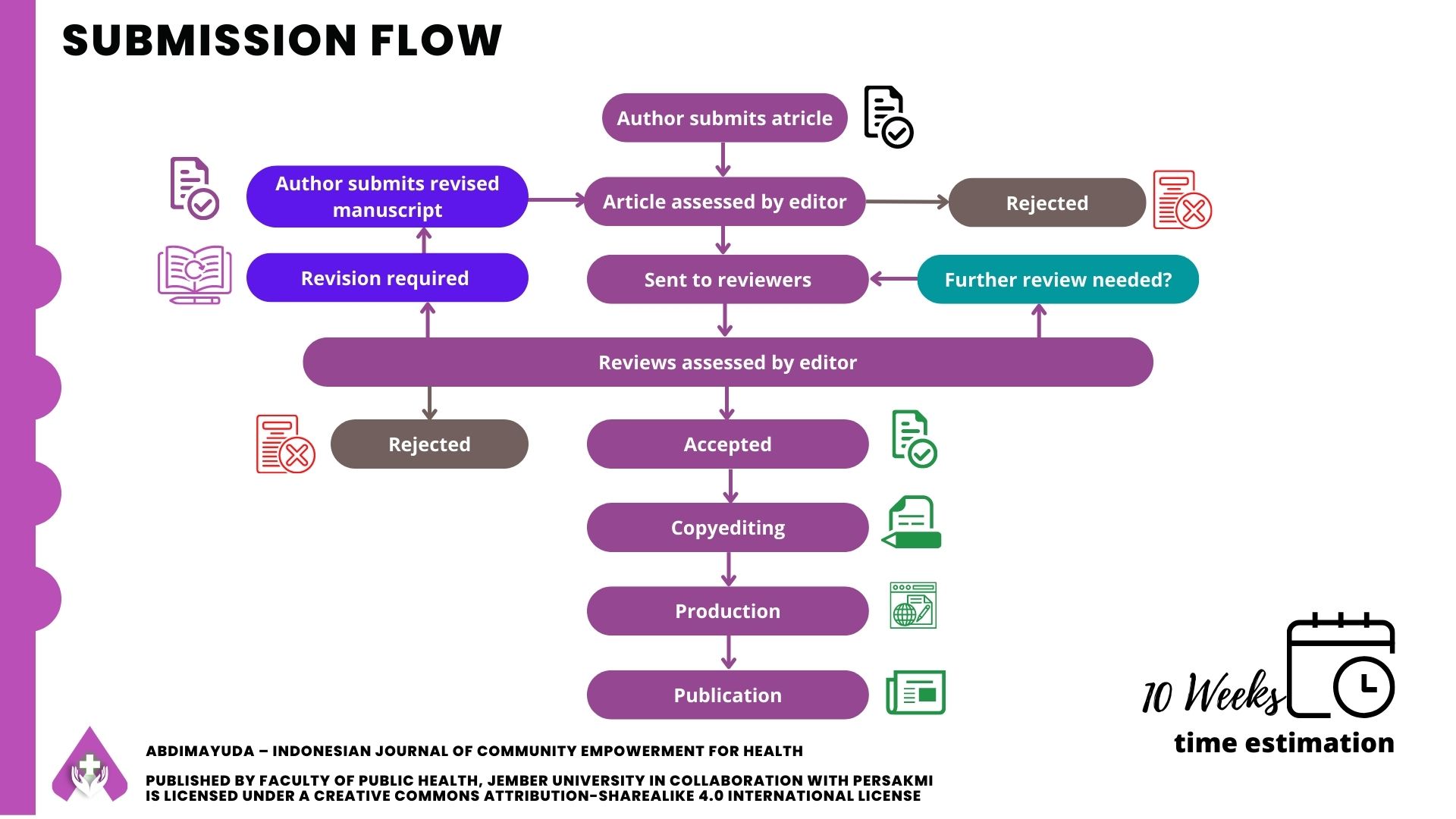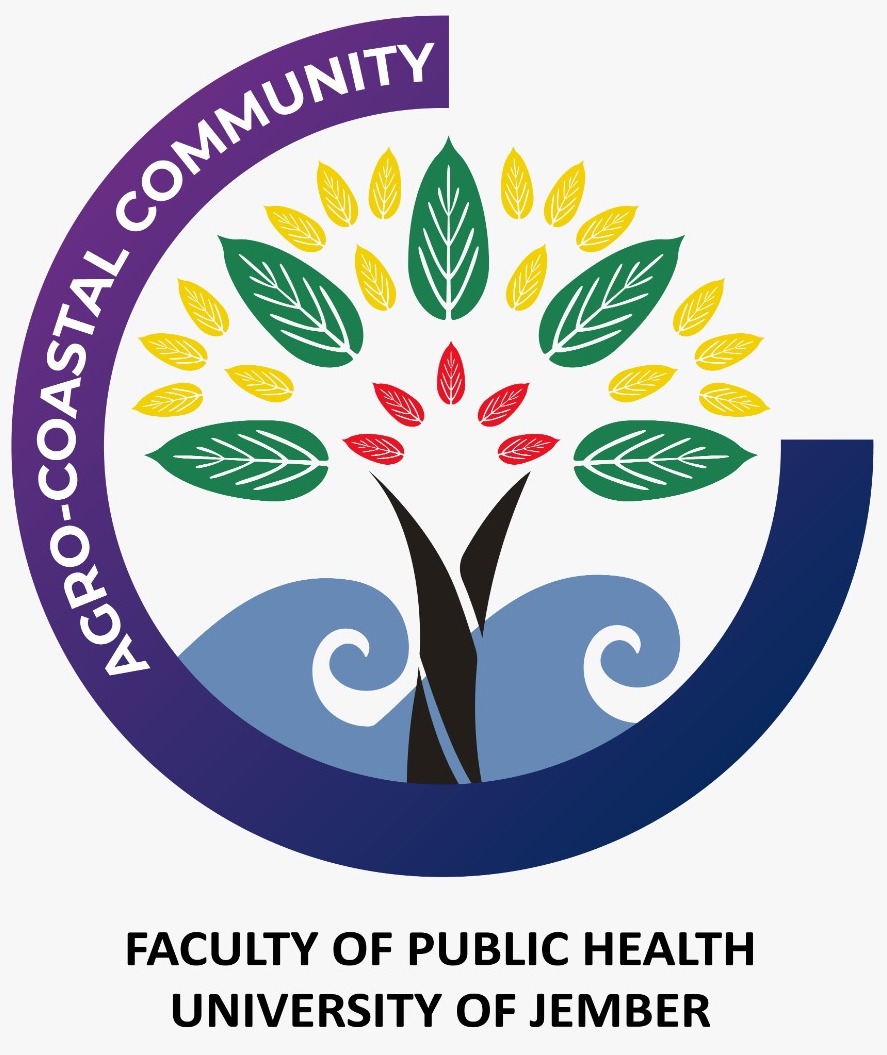Knowledge Overview of Home Environmental Sanitation Of Stunting Toddler In Pakis Village, Sawahan District, Surabaya City
Abstract
Stunting in children under five is a global health problem that can be influenced by various factors, including inadequate home sanitation. Stunting in children can be chronic from environmental sanitation problems, infectious diseases, and lack of food consumption. The contribution of poor home environmental sanitation to the problem of stunting can be seen from the growth of disease-causing microorganisms that can cause infections in the body, so that children experience growth failure. Pakis Village, as the partner area of this program, is part of the working area of Puskesmas Pakis Surabaya. Stunting in Pakis Village is still a serious problem because it is one of the villages with a high incidence of stunting in Surabaya City in 2022. This community service activity contributes to further understanding of the description of home sanitation and the incidence of stunting in toddlers. Community service is carried out in the form of home environmental sanitation counseling in supporting the elimination of stunting in infants and toddlers. Participants in the Community Service counseling were 26 participants out of 30 pre-test average results of participants who knew about home environmental sanitation which was 67.63 then after counseling / education related to home environmental sanitation there was an increase of 20.38% or the average post test score was 81.41. Cooperation between the government, community, and harvesters is needed.
References
2. Beal T, Tumilowicz A, Sutrisna A, Izwardy D, Neufeld LM. A review of child stunting determinants in Indonesia. Matern Child Nutr [Internet]. 2018;14(4):1–10. Available from: https://onlinelibrary.wiley.com/doi/full/10.1111/mcn.12617
3. Kementerian Kesehatan. Petunjuk Teknis Penyusunan dan Pelaksanaan Strategi Komunikasi Perubahan Perilaku Percepatan Pencegahan Stunting [Internet]. Kementerian Kesehatan RI. Jakarta: Kementerian Kesehatan RI; 2021. Available from: https://promkes.kemkes.go.id/download/fpkk/files49505Juknis Implementasi KPP Stunting_ISBN_13072021.pdf%0Astunting.go.id
4. Kementerian Kesehatan RI. Situasi Balita Pendek (Stunting) di Indonesia [Internet]. Jakarta; 2018. Available from: www.depkes.go.id
5. Fitriani F, Darmawi D. Hubungan Pengetahuan Dan Sikap Ibu Dengan Kejadian Stunting Pada Balita Di Desa Arongan Kecamatan Kuala Pesisir Kabupaten Nagan Raya. J Biol Educ. 2022;10(1):23–32.
6. Haines AC, Jones AC, Kriser H, Dunn EL, Graff T, Bennett C, et al. Analysis of rural Indonesian mothers knowledge, attitudes, and beliefs regarding stunting. Med Res Arch [Internet]. 2018;6(11):1–13. Available from: https://journals.ke-i.org/index.php/mra/article/view/1872
7. Rahmandiani RD, Astuti S, Susanti AI, Handayani DS, Didah D. Hubungan Pengetahuan Ibu Balita Tentang Stunting Dengan Karakteristik Ibu dan Sumber Informasi di Desa Hegarmanah Kecamatan Jatinangor Kabupaten Sumedang. J Sist Kesehat [Internet]. 2019;5(2):74–80. Available from: http://jurnal.unpad.ac.id/jsk_ikm/article/view/25661/0
8. Yulnefia Y, Sutia M. Hubungan Riwayat Penyakit Infeksi dengan Kejadian Stunting pada Balita Usia 24-36 Bulan di Wilayah Kerja Puskesmas Tambang Kabupaten Kampar. Jambi Med J [Internet]. 2022;10(1):154–63. Available from: https://online-journal.unja.ac.id/kedokteran/article/view/10410
9. Laili AN. Pengaruh Sanitasi di Lingkungan Tempat Tinggal Terhadap Kejadian Stunting Pada Balita. J Kebidanan. 2019;8(1):28–32.
10. Sinatrya AK, Muniroh L. Hubungan Faktor Water, Sanitation, and Hygiene (WASH) dengan Stunting di Wilayah Kerja Puskesmas Kotakulon, Kabupaten Bondowoso. Amerta Nutr. 2019;3(3):164–70.
11. Headey D, Palloni G. Water, Sanitation, and Child Health: Evidence From Subnational Panel Data in 59 Countries. Demography. 2019;56(2):729–52.
12. Garmini R, Purwana R. Polusi Udara Dalam Rumah Terhadap Infeksi Saluran Pernafasan Akut pada Balita di TPA Sukawinatan Palembang. J Kesehat Lingkung Indones [Internet]. 2020;19(1):1–6. Available from: https://ejournal.undip.ac.id/index.php/jkli/article/view/21221
13. Faradilah I. Hubungan Kejadian Stunting dengan Frekuensi dan Durasi Penyakit Diare dan ISPA pada Anak Usia Toodler di Wilayah Kerja Puskesmas Kenjeran Surabaya [Internet]. Sekolah Tinggi Ilmu Kesehatan Hang Tuah; 2019. Available from: http://repository.stikeshangtuahsby-library.ac.id/135/
14. Supariasa IDN, Bakri B, Fajar I. Penilaian Status Gizi. Jakarta: ECG; 2014. vii, 332 hlm.
15. Li S, Qin F, Dong Y, Zhou S, Sun J. Assessment of respiratory disease infection risk and natural ventilation intervention countermeasures in teaching spaces: A campus case study. J Build Eng [Internet]. 2023;70(March):1–15. Available from: https://doi.org/10.1016/j.jobe.2023.106369
16. Holden KA, Lee AR, Hawcutt DB, Sinha IP. The impact of poor housing and indoor air quality on respiratory health in children. Breathe. 2023;19:1–11.
17. Haas MMA de, Loomans MGLC, Kulve M te, Boerstra AC, Kort HSM. Effectiveness of personalized ventilation in reducing airborne infection risk for long-term care facilities. Int J Vent [Internet]. 2023;22(4):327–35. Available from: https://doi.org/10.1080/14733315.2023.2198781

This work is licensed under a Creative Commons Attribution-ShareAlike 4.0 International License.


















